Journeys in Liminal Space
The Alma Chamber, Mid Wales
In mid-Wales lies an enormous slate mine affectionately known by explorers
as ‘The Hollow Mountain’ (see Other Worlds 2024). It was the longest
continually operated slate mine in the world until its closure in 2003.
In 1854 the enormous open chamber at the top of the mine was named ‘Alma’
after the ‘Battle of the Alma’ in the Crimean War.
Here 8 horizontal tunnels about 20 metres above each other were bored
through the mountain. Each tunnel connected
to a large chamber from which the rock was extracted. As more slate was
extracted, several of these chambers were joined vertically to form extremely
large caverns. Some, like the Alma Chamber, are open to daylight and are
nearly 200 metres deep.
The top photograph was taken on a ledge on the side of the Alma
Chamber, resembling a box in a large theatre.
The second photograph shows the
view up to daylight from the bottom of Alma.
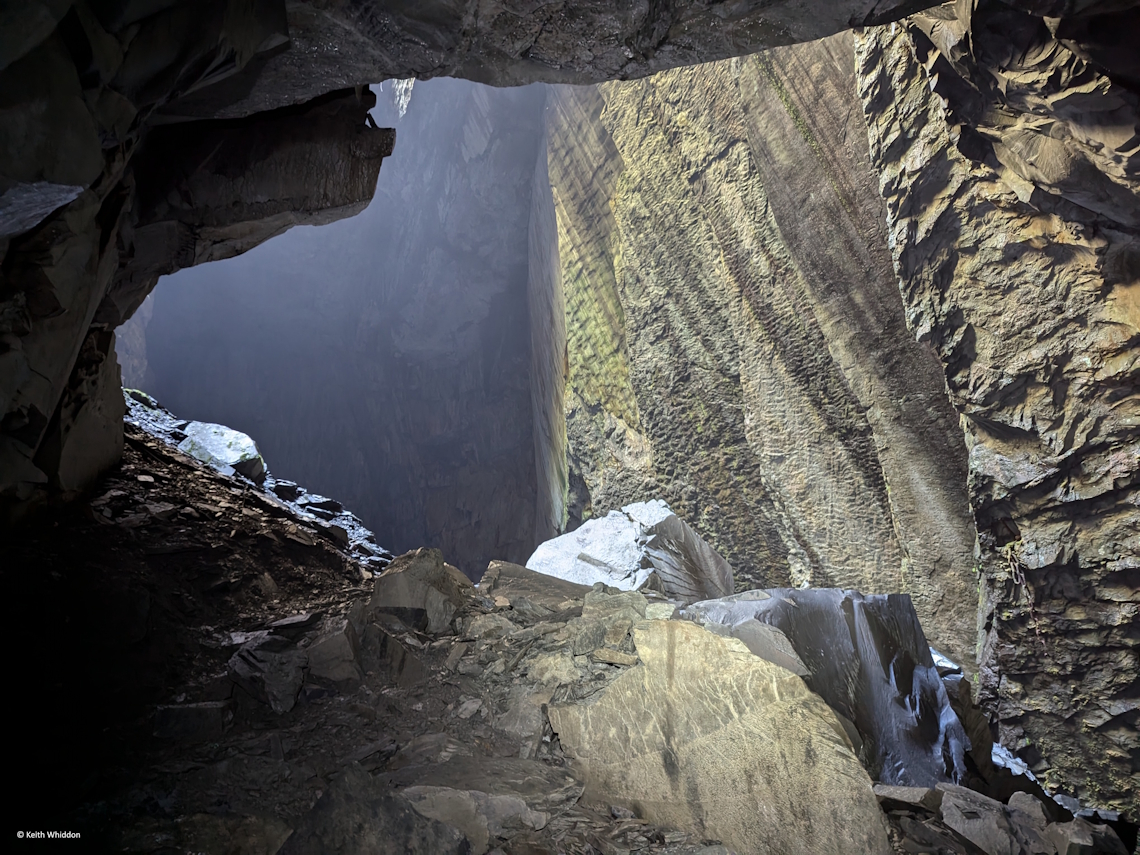
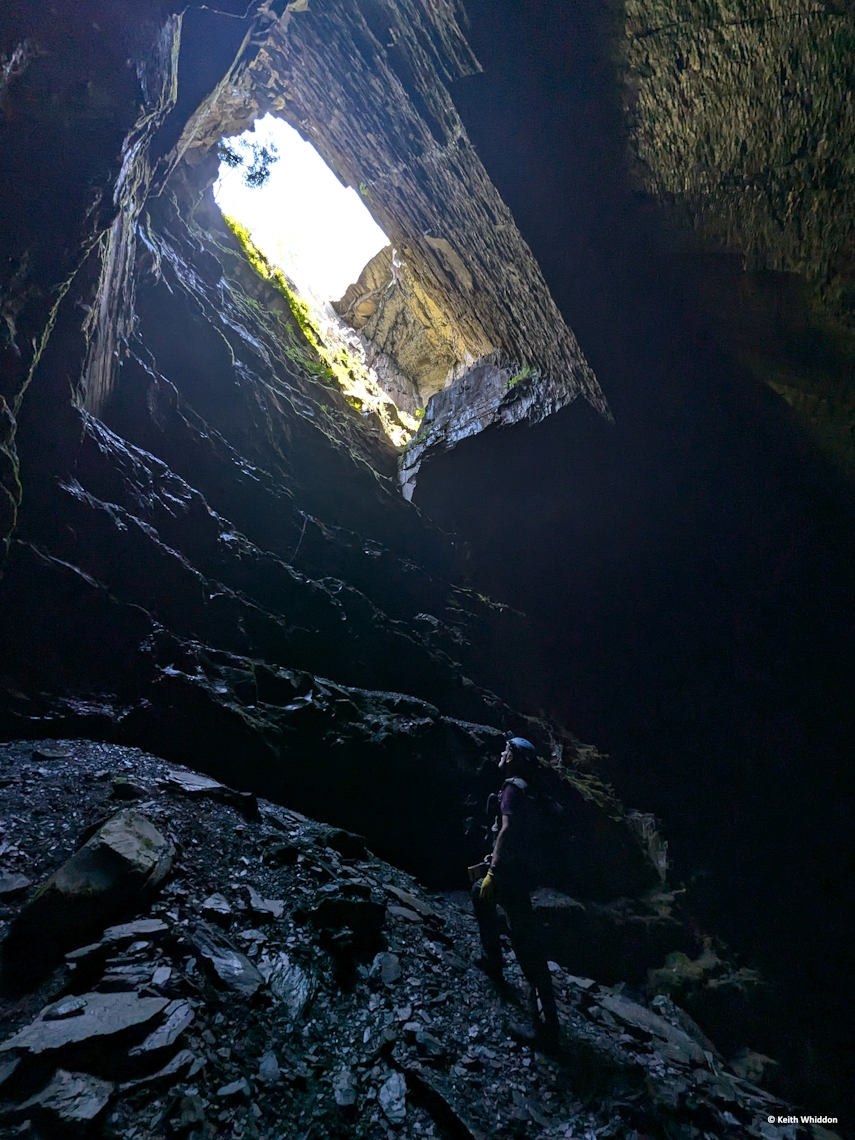
An Ancient Slate Mine, Wales
Clogwyn y Fuwch, or ‘Cow Cliff’ as
it translates, is a rocky crag high above Llyn Crafnant. One of the
first slate quarries in Wales, the workings here are predominantly underground,
having begun in the 1700's. It was developed by William Turner when he came to
Wales from the north of England in 1812, before he moved on to pioneer the
slate mines of Blaenau Ffestiniog.
The
lowest and oldest chamber is accessed through a very unusual cut-and-cover
tunnel. This technique, known as ‘matt-spedding’, is similar to those found in
Lake District mines, suggesting that Turner brought miners from there to work.
Although
not an extensive mine, its 2 main chambers are vast. Daylight pervades even the
deepest recesses. To reach the impressive higher chamber on levels 4, 5 and 6
involves negotiating a very slippery, and ridiculously steep incline. Sledges
were originally used to bring the slate down, which must have been incredibly
dangerous!
Clogwyn y
Fuwch gives a rare insight into early slate mining practices. With its massive,
day-lit chambers it is a very spectacular and photogenic hidden place.

Video of a walk through the middle level of the mine
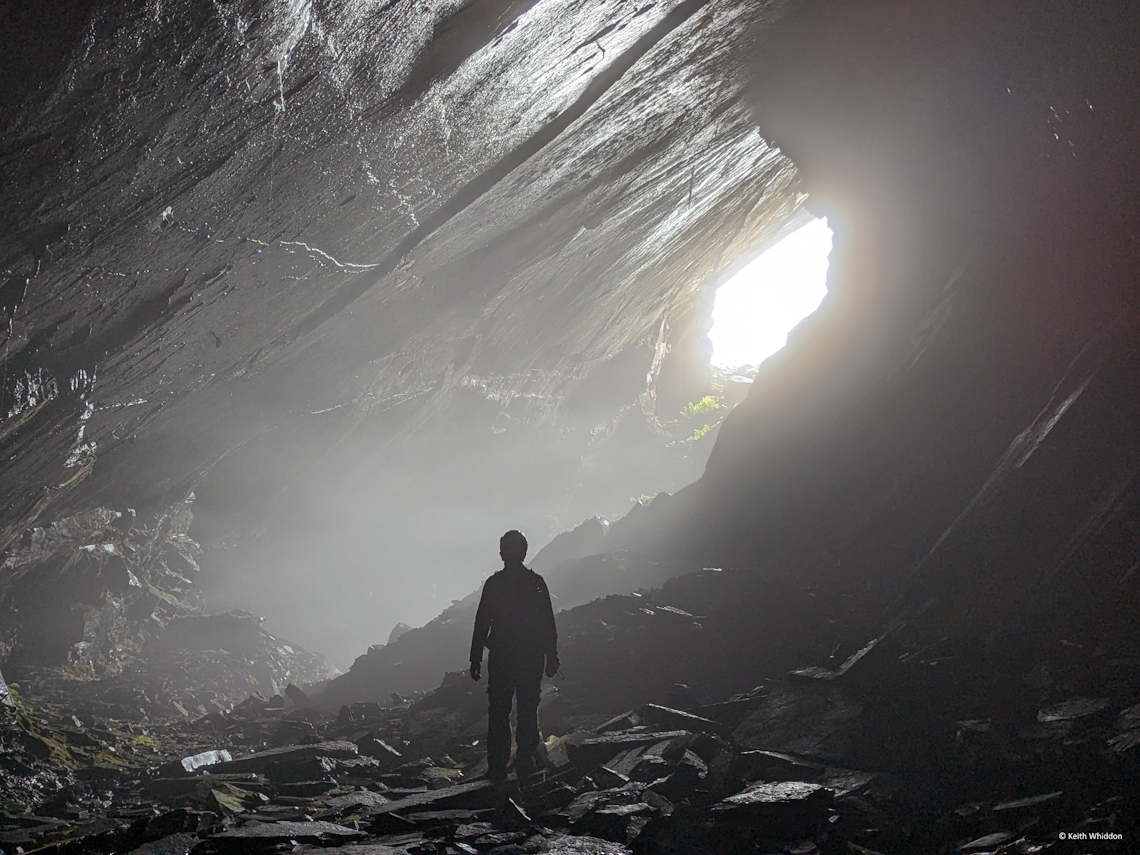
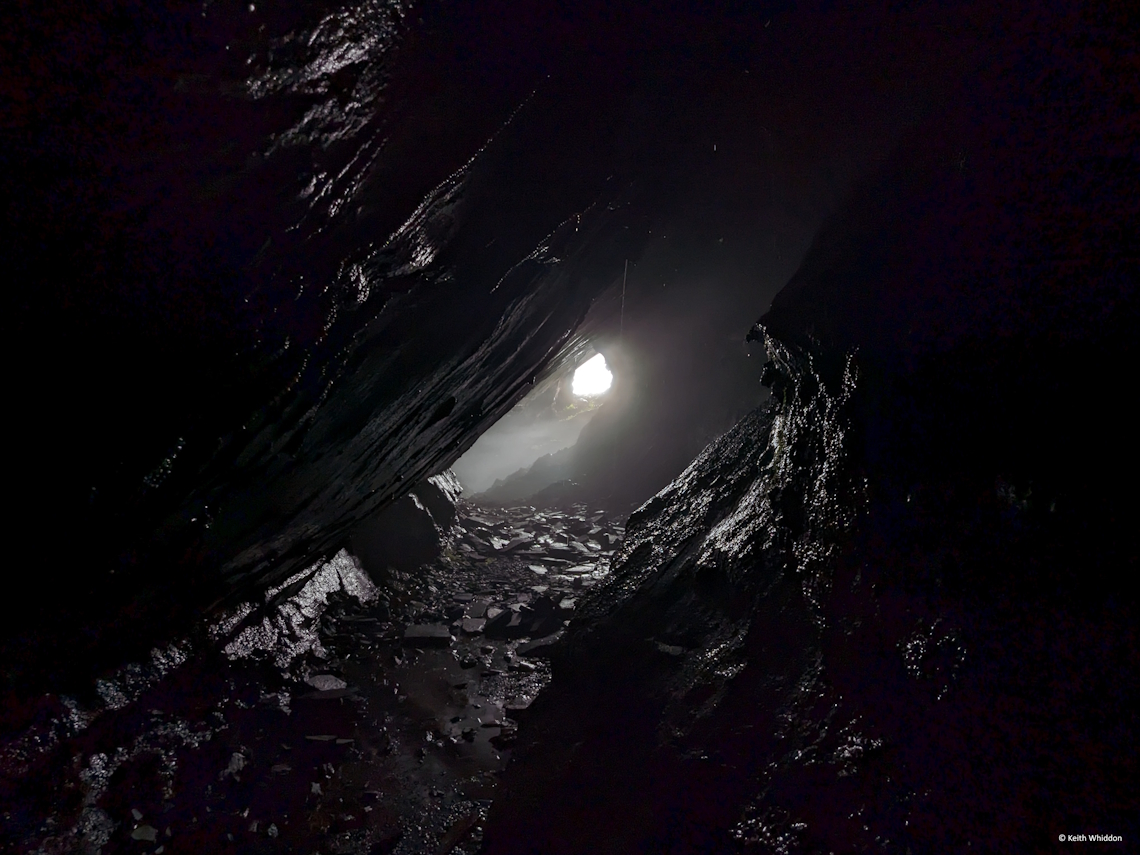
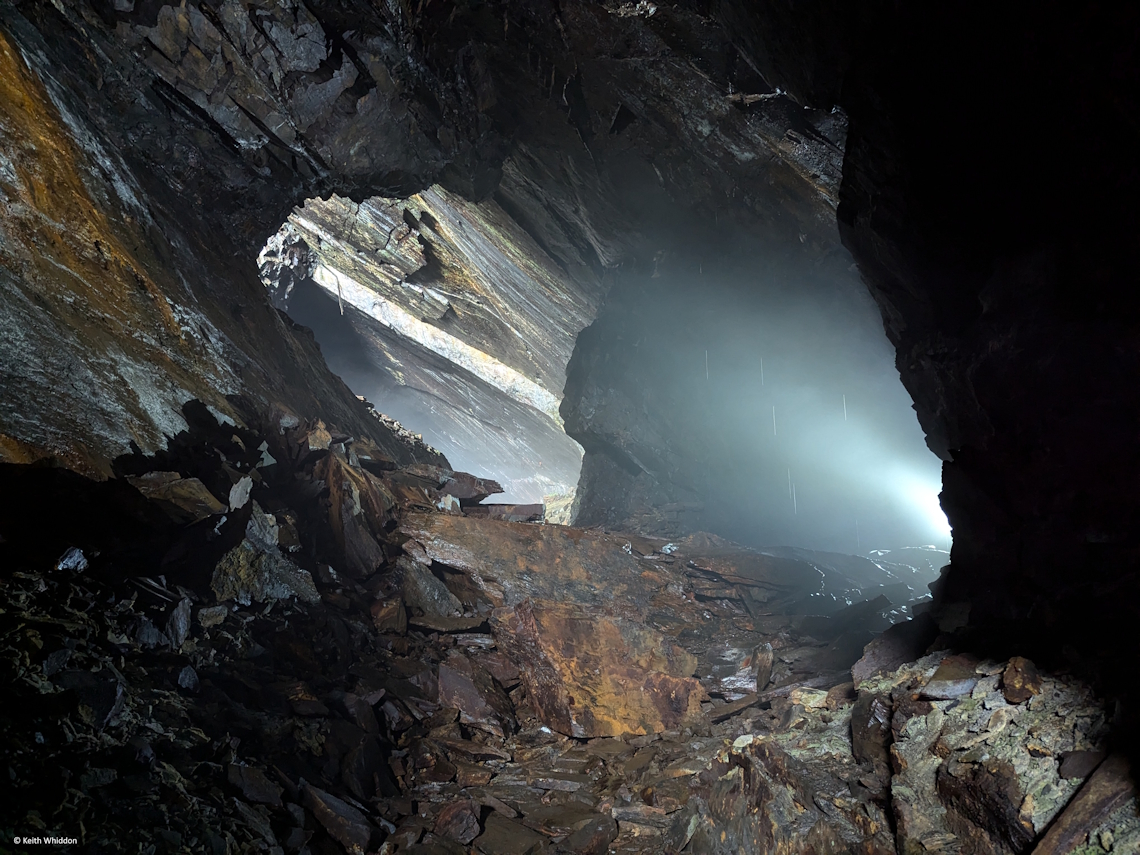
An Elegant Track Layout, Wales
An underground incline intersects a floor in an old Welsh slate mine. The incline is unusual in that it is only single track. This meant that laden wagons going up had to pass empty wagons coming down. This was achieved by an elegant track layout that enabled wagons to pass each other and access the incline by means of a small turntable that still revolves freely.
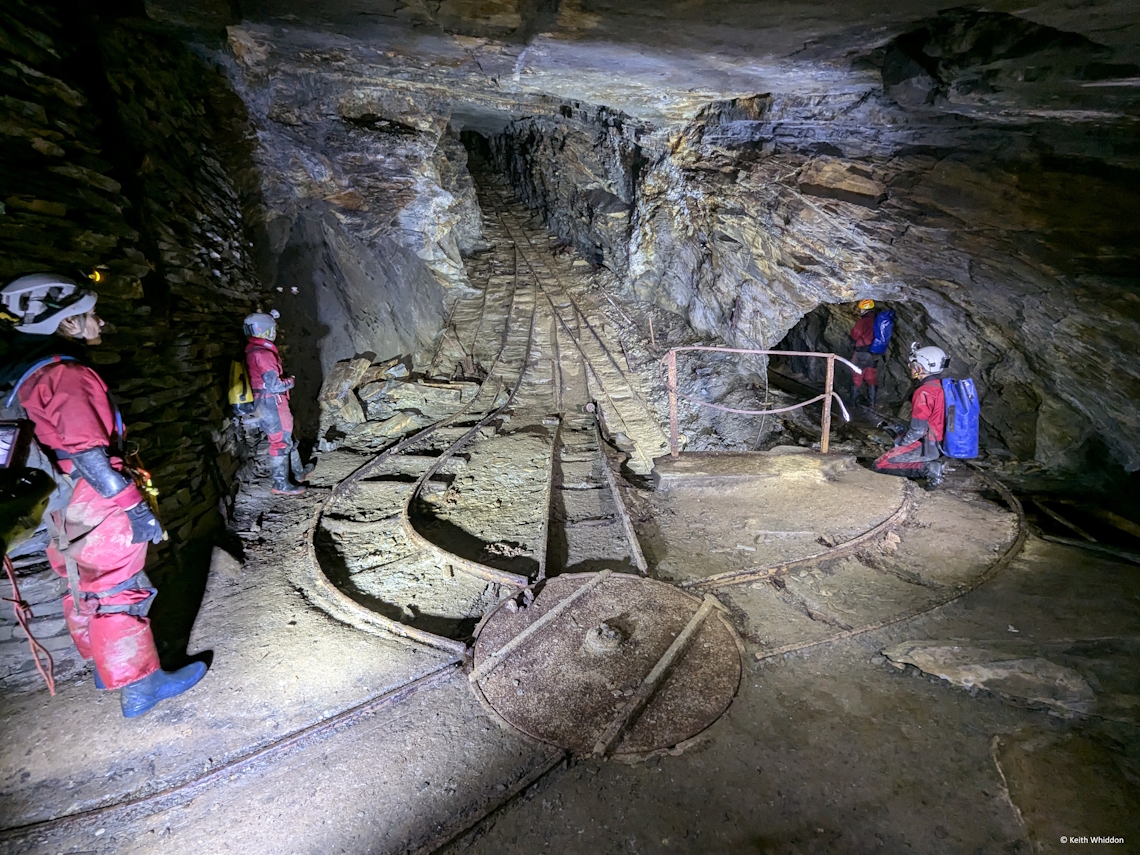
The Birthplace of Modern Tunnelling Technology, Wales
As discussed in Other Worlds 2024 (under 'The Corris Binoculars, Wales'), Sir William Fothergill-Cooke formed a partnership with George Hunter to pioneer a tunnel-boring machine in the early 1860's. They tested and refined this in Ffestiniog and this photograph was taken inside the original bore carved out by the first machine. It was very experimental and Fothergill-Cooke had a wall and door constructed so that it was kept 'hush-hush'. One can only imagine what the miners who passed by the door made of the noises they heard from within!
The tunnel may be considered as the birthplace of modern tunnelling technology and considering that it is 165 years old, it is in remarkably good condition.

'The Bastion', Mid Wales
'Twll Golau' / 'Daylight Hole' in 'The Hollow Mountain', is described in Other Worlds 2024. It is a huge chamber some 200 metres deep, yet open to the sky. Immediately behind it on the surface lies a massive dry-stone slate wall known as 'The Bastion'. This wall is concave and more than 20 metres high and about 17 metres wide. At its base runs a tunnel, accessed by a narrow and very exposed ledge. Inside are the rotting remains of wooden scaffolding that supports the stonework.
Above the wall is a large, flat area which demonstrates that the structure is very deep, as shown in the first photograph below. It is thought that 'The Bastion' was constructed as a means of disposing of slate waste, as space for tipping was limited here.
The second photograph, from the top of 'The Bastion', shows the vertigo-inducing view down the 200 metres into the 'Twll Golau' / 'Daylight Hole' below.
That the early miners were able to construct such a major wall out of just dry slate above such an exposed drop remains a testament to both their skill and bravery.
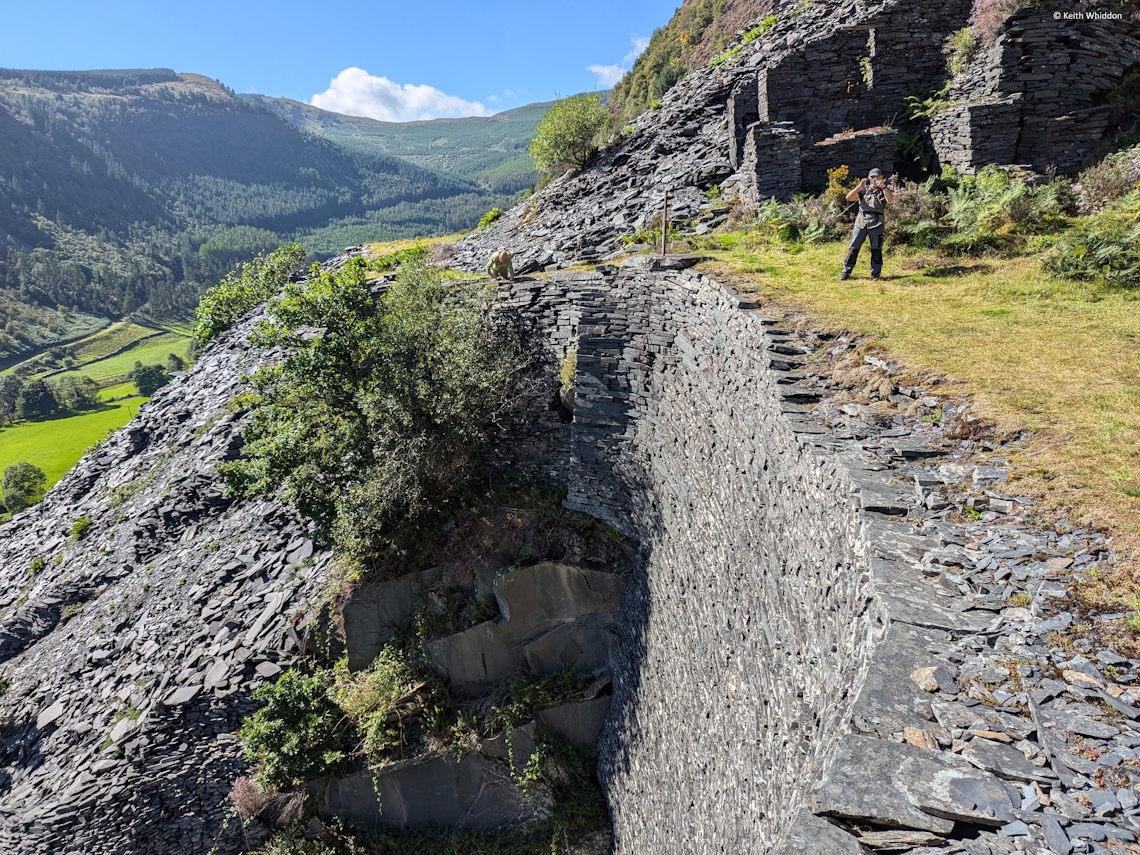

Tectonic Movement, East Wales
The slate veins in east Wales are from the Silurian era rather than the
older and harder Ordovician and Cambrian found across Snowdonia. Berwyn slate
is relatively soft and not so well-suited to roofing. The huge red, corrugated
ceilings in parts of this mine are a unique and impressive feature. This area
was subjected to extreme folding of the strata during the later Silurian period
and it is thought that these corrugations are evidence of such intense tectonic movements.
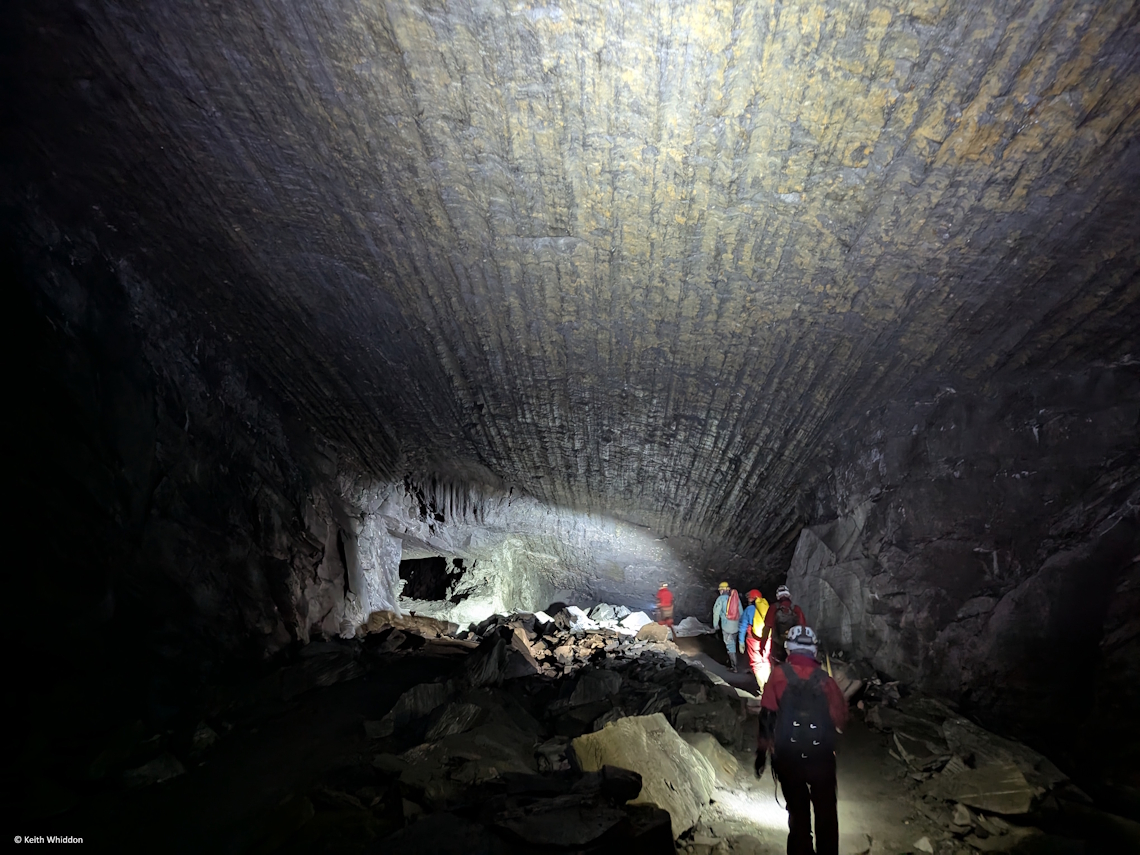 TOP
TOP
© Keith Whiddon 2023 - 25